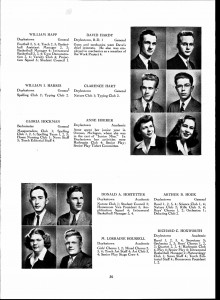 The other day, I was discussing genealogy with a friend and she said to me, “So, genealogy is just one big walk down memory lane?” I thought about this, and while I think that genealogy might be more of a drive down the memory interstate highway, I could not get this idea out of my head. I began to think of how some of us like to mosey down memory lane. For some, this might involve looking through old emails or pulling out a memory box. For me, it means flipping through old yearbooks. Continue reading “Memory lane”
The other day, I was discussing genealogy with a friend and she said to me, “So, genealogy is just one big walk down memory lane?” I thought about this, and while I think that genealogy might be more of a drive down the memory interstate highway, I could not get this idea out of my head. I began to think of how some of us like to mosey down memory lane. For some, this might involve looking through old emails or pulling out a memory box. For me, it means flipping through old yearbooks. Continue reading “Memory lane”
Tag Archives: Object Lessons
Tracing ancestral paths: Part Two
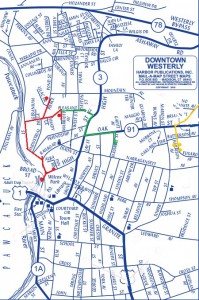
As I mentioned in yesterday’s post, knowing where an ancestor was living within a town at a certain time can be extremely beneficial for a number of reasons. After listing all of the known locations of my ancestors in my hometown of Westerly, Rhode Island, I was able to plot all of these points on a map and see where they had lived and worked. One of the benefits of this knowledge is that, with modern technology, we can see the locations of many of our ancestors’ homes as they stand today. In many cases, the same houses they once occupied may still remain. Websites such as Google Maps, which offer virtual tours of locations around the globe, have greatly expanded the experience of discovering one’s family history. Continue reading Tracing ancestral paths: Part Two
Tracing ancestral paths: Part One
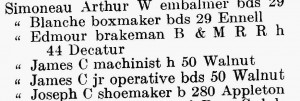
Whether it is collecting, reading, drawing, or painting, maps have always been one of my greatest passions. Therefore, it should come as no surprise that I consider maps an essential tool in my genealogical research. As a researcher, even if I know that some of my ancestors spent their entire lives in the same city or town, I can never assume that they always lived in the same exact location. There are a multitude of sources where an individual’s address at any given point can be found, including: Continue reading Tracing ancestral paths: Part One
What’s in a name: Part Two
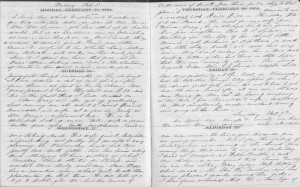
In the coming weeks, I will be reviewing a diary in our collection with an eye toward its eventual publication. The diarist is Hedwiga Regina (Shober) Gray (1818–1885), a native of Philadelphia who married Dr. Francis Henry Gray of Boston (1813–1880) in 1844. As diaries are rarely written with an audience in mind, no matter how remote, Mrs. Gray’s diary – in twenty-five volumes, spanning the years 1860–1884 – is full of interesting mysteries about the identities of the people she encounters. Continue reading What’s in a name: Part Two
The year in review concluded
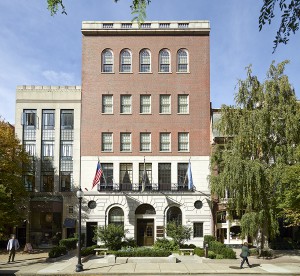 In yesterday’s post, I covered some of the more than 250 blog posts published in Vita Brevis during the first half of 2014. The series concludes with a post from each of the last six months of the year.
In yesterday’s post, I covered some of the more than 250 blog posts published in Vita Brevis during the first half of 2014. The series concludes with a post from each of the last six months of the year.
At the end of July, Katrina Fahy solved a genealogical puzzle using family letters, since the family in question lived in a region with few available nineteenth century vital records: Continue reading The year in review concluded
The year in review
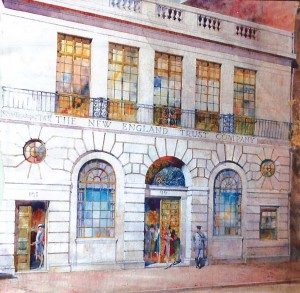
As I write this, a few days before the New Year begins, Vita Brevis is nearly a year old; it has had more than 300,000 page views since its first post on 2 January 2014. (This is a statistic I like to trumpet, although of course a single reader on a given day might well look at more than one entry: so I cannot claim 300,000 unique readers over the course of the first year, much as I would like to!) That first post, Generatio longa, vita brevis, hinted at the blog’s purpose: “Vita Brevis will include short posts on research methods – applicable to a variety of genealogical subjects – as well as posts on results. Like a mosaic, these posts will, in time, form a new collection for the genealogical researcher to explore.” Continue reading The year in review
Town and city annual reports
 Municipal annual reports provide a breakdown of various city and town department budgets and expenditures for the year. At first glance it may seem that these publications would not be useful for genealogical research, but taking the time to search these reports for information about your ancestors may lead to some interesting discoveries about their lives and the lives of their contemporaries. Many of these reports include a roster of municipal employees and their annual salaries. For example, the 1887 edition of City of Somerville (Massachusetts) Annual Reports contains information submitted by a number of departments, including the School Committee.[1] Their report includes a table listing the school teachers who worked in Somerville that year, their salaries, and the year they were hired. Continue reading Town and city annual reports
Municipal annual reports provide a breakdown of various city and town department budgets and expenditures for the year. At first glance it may seem that these publications would not be useful for genealogical research, but taking the time to search these reports for information about your ancestors may lead to some interesting discoveries about their lives and the lives of their contemporaries. Many of these reports include a roster of municipal employees and their annual salaries. For example, the 1887 edition of City of Somerville (Massachusetts) Annual Reports contains information submitted by a number of departments, including the School Committee.[1] Their report includes a table listing the school teachers who worked in Somerville that year, their salaries, and the year they were hired. Continue reading Town and city annual reports
A Christmas box
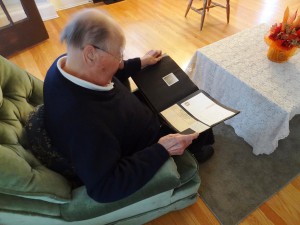
In this season of giving, sometimes the most enjoyment comes from sharing items you forgot you had instead of those newly received. Three years ago, I celebrated Christmas at the mountain home of my paternal grandparents. At some point, my grandfather mentioned to my father and aunts that he still had a box of their old vinyl records in storage. Naturally, they could not recall what might have been left over from their school days, and my cousins and I were curious about our parents’ musical tastes. We convinced my grandfather to dig out the box. Continue reading A Christmas box
Reading other people’s mail: Part Two
 Thomas Hutchinson (1711–1780) was the last crown-appointed civilian governor of Massachusetts. During his term of office, he dealt with the aftermath of both the Boston Massacre and the Boston Tea Party. The Colonial Society of Massachusetts has recently published the first volume of his selected correspondence covering the years 1740–1766. It is most readily available through amazon.com. Here are further thoughts about the process of documentary editing by John Tyler, one of the volumes’ two co-editors.
Thomas Hutchinson (1711–1780) was the last crown-appointed civilian governor of Massachusetts. During his term of office, he dealt with the aftermath of both the Boston Massacre and the Boston Tea Party. The Colonial Society of Massachusetts has recently published the first volume of his selected correspondence covering the years 1740–1766. It is most readily available through amazon.com. Here are further thoughts about the process of documentary editing by John Tyler, one of the volumes’ two co-editors.
It is often said that transcription (translating eighteenth-century handwriting into Microsoft Word) is about one-third of the work involved in documentary editing. For the Hutchinson papers, Malcolm Freiberg and Catherine Shaw Mayo had already established, in a preliminary way, the text of most key letters. Elizabeth Dubrulle and I would be negligent, however, if we did not check these against the originals, but Freiberg was very rarely wrong. Continue reading Reading other people’s mail: Part Two
Solving a “mystery of baseball”
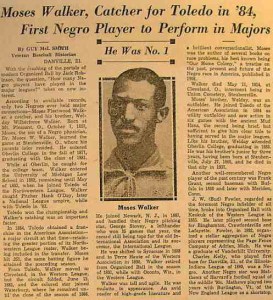
Ask any baseball fan who the first African-American major league player was, and nearly all will tell you it was Jackie Robinson. Ask anyone familiar with the game’s long and storied history before Robinson’s debut in 1947, and they’ll tell you it was Moses Fleetwood Walker and his brother Weldy, who broke into the game in 1884.[1] Very few, if any, would tell you that it was a man named William Edward White who became the first African-American to play in a major league baseball game in 1879. Had it not been for a few keen researchers, William Edward White’s name would have been lost to baseball history, perhaps forever. Continue reading Solving a “mystery of baseball”